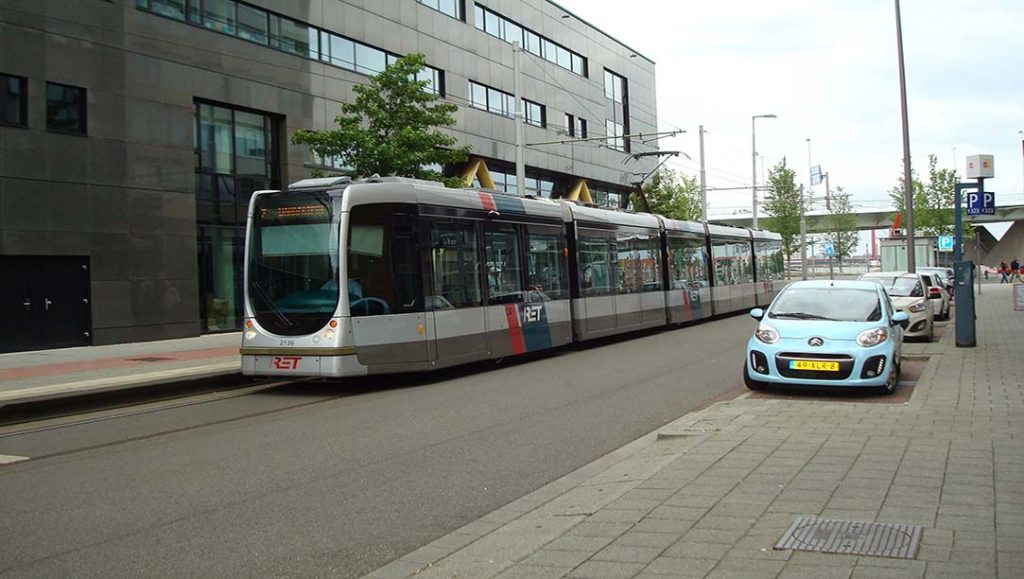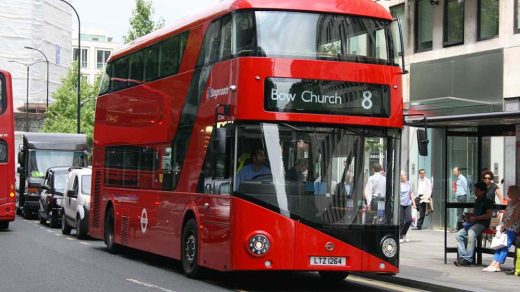Rotterdam, with its stunning modern architecture, vibrant arts scene, and rich cultural history, is a city that’s both easy to navigate and full of must-see sights. During my recent visit, I quickly discovered that the city’s public transportation system is not only efficient but also a fantastic way to explore all that Rotterdam has to offer. With an extensive network of trams, buses, metros, and water taxis, getting around the city is both convenient and enjoyable. Here’s a detailed guide on how to use public transportation in Rotterdam to reach its most popular attractions, based on my personal experience.
1. Understanding Rotterdam’s Public Transportation System
Rotterdam’s public transportation is managed by the RET (Rotterdamse Elektrische Tram), which operates the city’s trams, buses, and metro lines. The system is well-organized, with frequent services that make it easy to get from one part of the city to another. Before diving into specific routes and attractions, here’s a quick overview of the main modes of public transport:
- Trams: Ideal for short distances and city center travel. Trams are a great way to see the city as you move from one attraction to another.
- Metro: The fastest option for traveling longer distances within Rotterdam and connecting to neighboring cities. The metro system consists of five lines: A, B, C, D, and E.
- Buses: Buses cover areas not accessible by tram or metro and are useful for reaching more remote attractions.
- Water Taxis: A unique and scenic way to travel, especially if you’re heading to areas along the river or to the historic Delfshaven district.
One of the best decisions I made during my stay was purchasing an OV-chipkaart, a reloadable card that can be used on all forms of public transportation. The card made traveling much easier and more cost-effective, as it can be topped up as needed and used across the entire public transport network.
2. Getting to Rotterdam Central Station
Rotterdam Central Station (Rotterdam Centraal) is the city’s main transportation hub and a starting point for exploring the city. If you’re arriving by train from another city in the Netherlands or from neighboring countries, this is where you’ll likely start your journey. The station itself is a marvel of modern architecture, with a sleek, angular design that makes it an attraction in its own right.
Upon arrival, I found it easy to navigate the station, thanks to the clear signage and helpful information desks. From here, you can catch trams, buses, and metro lines to almost any part of the city. The station is also home to a variety of shops, cafes, and restaurants, making it a convenient place to grab a quick bite or coffee before heading out.
Transportation Options from Rotterdam Central Station:
- Metro Lines: Lines D and E run through Rotterdam Centraal, making it easy to connect to other parts of the city.
- Trams: Several tram lines, including 4, 7, 8, 21, 23, and 25, serve the station, providing access to many of Rotterdam’s top attractions.
- Buses: Numerous bus routes start or pass through the station, giving you access to areas not covered by the metro or tram.
3. Visiting the Markthal

The Markthal is one of Rotterdam’s most iconic buildings and a must-visit for anyone coming to the city. This impressive horseshoe-shaped structure is home to a massive indoor food market, featuring a wide array of vendors selling everything from fresh produce to international delicacies. The building itself is a work of art, with a stunning arched ceiling covered in vibrant murals that depict oversized fruits, vegetables, and flowers.
To get to the Markthal, I took Tram 21 from Rotterdam Centraal, which dropped me off right at the doorstep of this remarkable building. The tram ride was short and scenic, passing through the city center and offering glimpses of Rotterdam’s diverse architecture along the way.
Alternative Routes:
- Metro Line D or E: Get off at the Blaak station, which is directly beneath the Markthal. The station’s underground location means you can step off the metro and be at the entrance to the Markthal in seconds.
- Bus: Several bus lines also stop near the Markthal, including lines 32 and 48.
4. Exploring the Cube Houses (Kubuswoningen)
Just a short walk from the Markthal, you’ll find the Cube Houses (Kubuswoningen), another of Rotterdam’s architectural marvels. These unique, tilted cube-shaped houses are a striking sight and a great example of the city’s innovative spirit. I found the Cube Houses to be even more fascinating in person, with their unconventional angles and bright yellow exteriors.
To reach the Cube Houses, I continued my journey on foot from the Markthal, as they are located just across the street. However, if you’re coming from another part of the city, you can take the Tram 21 or 24 to the Blaak station or catch a metro on lines D or E to Blaak.
For a deeper understanding of the Cube Houses, I recommend visiting the Show Cube, a museum that allows you to explore the interior of one of these unique homes. The experience offers insight into the architect’s vision and the challenges of living in such an unconventional space.
5. A Journey to the Erasmus Bridge (Erasmusbrug)
The Erasmus Bridge (Erasmusbrug), often referred to as “The Swan” due to its graceful design, is one of Rotterdam’s most famous landmarks. This stunning piece of architecture spans the Nieuwe Maas River, connecting the northern and southern parts of the city. The bridge is a symbol of Rotterdam’s modernity and resilience and provides breathtaking views of the city skyline.
To visit the Erasmus Bridge, I hopped on Tram 23 from Rotterdam Centraal, which took me directly to the bridge. The tram ride offered a picturesque route along the river, making it a perfect way to see the city from a different perspective. Once I arrived, I spent some time walking across the bridge, taking in the views of the surrounding skyscrapers and the bustling port.
Alternative Routes:
- Metro Line D or E: Get off at the Wilhelminaplein station, which is a short walk from the southern end of the Erasmus Bridge.
- Bus: Several bus lines, including 32 and 48, stop near the bridge, making it easily accessible from various parts of the city.
6. Discovering the Historic Delfshaven
Delfshaven is one of the few areas in Rotterdam that survived the bombings of World War II, making it a rare glimpse into the city’s past. This historic district is filled with charming canals, old warehouses, and traditional Dutch architecture. Delfshaven is also known as the departure point of the Pilgrims who sailed to America on the Mayflower, adding a layer of historical significance to the area.
To reach Delfshaven, I took the Metro Line A from Rotterdam Centraal, heading towards Schiedam, and got off at the Delfshaven station. From there, it was just a short walk to the heart of the district. The metro ride was quick and efficient, and I appreciated the opportunity to travel underground and avoid the city’s busy traffic.
Once in Delfshaven, I enjoyed a leisurely stroll along the canals, visited the Pilgrim Fathers’ Church, and sampled some local beer at one of the traditional breweries in the area. The peaceful atmosphere of Delfshaven was a refreshing contrast to the modernity of the rest of the city.
Alternative Routes:
- Tram Line 4: This tram line also goes to Delfshaven, offering a scenic route through the city.
- Bus: Several bus routes pass through the Delfshaven area, providing easy access from other parts of Rotterdam.
7. Reaching the Euromast
No visit to Rotterdam is complete without a trip to the Euromast, the city’s tallest structure, offering panoramic views from its observation deck. Standing at 185 meters, the Euromast provides an unparalleled perspective of Rotterdam’s skyline, the port, and even as far as The Hague on a clear day.
To visit the Euromast, I took Tram 8 from Rotterdam Centraal, which dropped me off near the entrance to the park surrounding the tower. The tram journey was pleasant, passing through some of Rotterdam’s more residential areas before reaching the scenic Het Park, where the Euromast is located.
The highlight of my visit was the ride in the Euroscoop, a rotating glass elevator that takes you to the very top of the tower. The views from the top were simply breathtaking, offering a 360-degree panorama of the city and beyond. For those with a sense of adventure, the Euromast also offers an option to abseil down the tower—a thrilling experience that I may try on my next visit!
Alternative Routes:
- Metro Line A, B, or C: Get off at the Dijkzigt station and walk through the park to reach the Euromast.
- Bus: Bus lines 44 and 46 also stop near the Euromast, providing a convenient alternative to the tram.
8. Exploring Rotterdam’s Maritime Museum
Rotterdam’s rich maritime history is best explored at the Maritime Museum, one of the oldest and largest maritime museums in the world. The museum offers fascinating exhibits on the city’s seafaring past, the history of the port, and interactive displays that are perfect for all ages.
To get to the Maritime Museum, I took Tram 7 from Rotterdam Centraal, which conveniently stopped just a short walk from
the museum. The tram ride itself was a pleasant way to see more of the city, passing through lively shopping districts and quieter residential neighborhoods.
Once at the museum, I spent several hours exploring the various exhibitions, learning about everything from ancient shipbuilding techniques to modern-day shipping logistics. The museum also features a collection of historic ships moored in the adjacent harbor, which you can board and explore.
Alternative Routes:
- Metro Line D or E: Get off at the Beurs station and walk a few minutes to the museum.
- Bus: Bus lines 32 and 48 provide easy access to the Maritime Museum, with stops nearby.

Navigating Rotterdam using its public transportation system proved to be an incredibly efficient and enjoyable way to explore the city’s top attractions. From the modern marvels of the Erasmus Bridge and the Cube Houses to the historic charm of Delfshaven and the towering heights of the Euromast, each destination offered a unique glimpse into what makes Rotterdam such a fascinating place.
By utilizing the city’s well-connected tram, metro, and bus networks, I was able to see so much of what Rotterdam has to offer without the stress of driving or navigating unfamiliar streets. The convenience of the OV-chipkaart and the clarity of the RET’s transportation system made it all the more seamless.
If you’re planning a trip to Rotterdam, I highly recommend taking advantage of the city’s public transportation. It’s a great way to immerse yourself in the local culture, see the sights, and make the most of your time in this dynamic city.


